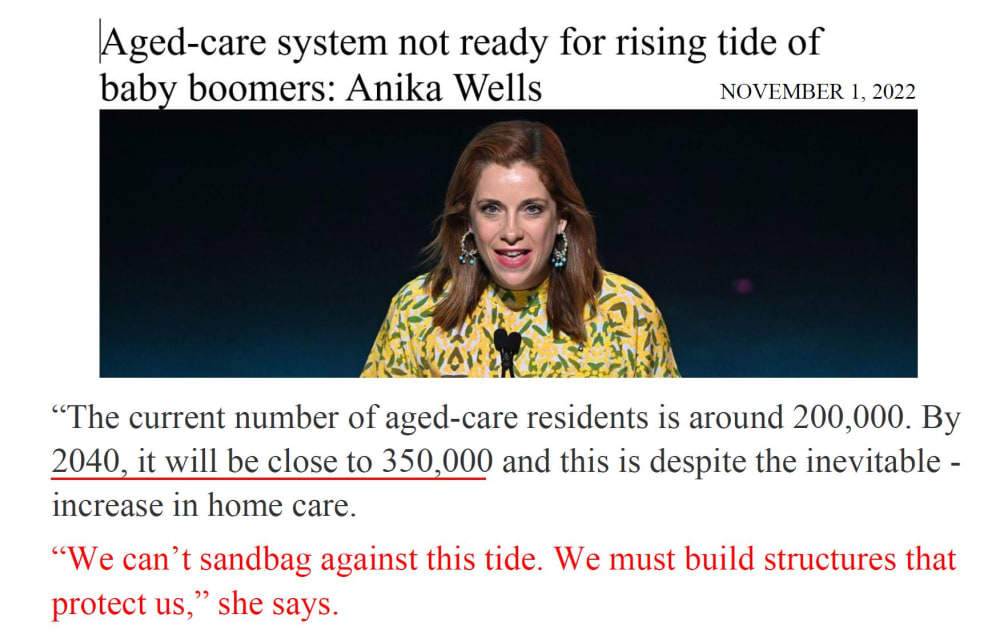This week, we have been diving into the snapshot of 2022-23 data from the Department of Health and Aged Care ahead of the release of the latest Report on the Operation of the Aged Care Act – and there’s one standout figure.
You can download the spreadsheet here.
The data shows that there were 2,639 residential aged care services in 2022-23 – 32 fewer than the previous year.
The numbers reflect a continuing trend from 2021-22 and 2020-21 when 33 homes closed their doors in both years.
Overall, the number of residential care providers has dropped by 10% in the last five years – from 886 providers in 2018 to 805 last year.
This doesn’t sound significant.
But the beds in these homes aren’t all being replaced.
As we have reported, just 1,674 new beds were added in 2023 – the year before, it was just 860.
Two million Australians turning 80 before 2031
Contrast this with the growing number of ageing Australians.
At the last Census in 2021, the number of Australians aged 75-79 was just over 821,000 – the 70-74-year-old age group numbered 1.16 million.
That is around two million people that are expected to turn 80 in the next 10 years.
Home care won’t provide an alternative option for everyone either.
The number of Home Care Packages (HCP) has climbed to 269,000, a 41,000 or 18% increase on the past 12 months and a huge 378% increase on the 71,000 HCPs as of June 2017.
But with the Federal Government failing to take up the Aged Care Royal Commission’s recommendation to uncap services, care services remain constrained.
As Aged Care Minister Anika Wells stated last year, we can’t sandbag against this problem.
Green shoots on the horizon
Are there solutions? Yes.
The Aged Care Taskforce is handing over its interim advice to the Government this month, where it will be examined by the Cabinet.

Plan B, or increased consumer contributions for aged care accommodation and daily living services, looks likely to form part of its final recommendations.
We understand that the Taskforce has also been canvassing the banks and super funds on what is required to drive capital investment into the sector.
Importantly, there should also be measures contained in the Final Report to support innovation in the sector – the missing piece of the aged care funding puzzle.
The SOURCE: With just 10 weeks until the Taskforce’s final meeting in December, operators should be looking ahead with a degree of optimism.











